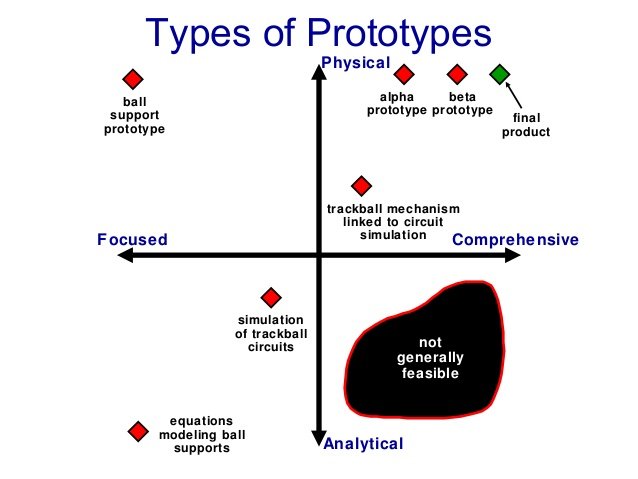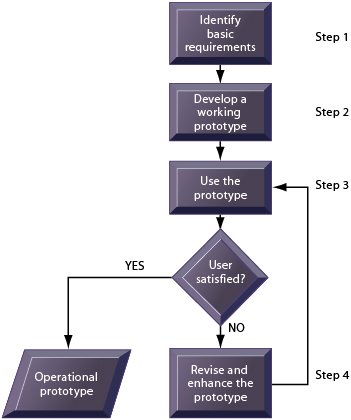What is prototyping:- Prototyping is a working model which is based on the interaction between analysts & users, built as a preliminary solution to a problem.
A prototype is built, tested & then reworked as necessary until an acceptable prototype is finally achieved from which the complete system can be developed.
Types of Prototypes

Functional Prototypes
A functional prototype attempts to imitate the functions of the actual product as closely as possible, regardless of how different it looks. These types of prototypes are used for products whose functionality is more important than its display.
For example: creating a backend prototype without working on the frontend of the website.
Display Prototypes
Display prototypes prototypes may or may not function but represent the look of the actual product very well.
Miniatures
Miniatures are smaller versions or the basic versions of the product focused on both the functional aspect as well as the display aspect. Nevertheless, these aren’t the actual products and lack many qualities of the actual product like not working at full capacity, etc.
Throwaway prototype
These products are only used to represent what an actual product can do. Throwaway prototypes are also called close ended prototypes
Evolutionary Prototype
Evolutionary prototyping uses a different approach than throwaway prototyping and involves building a basic but robust prototype in a manner which can further be improved and built upon to form an actual saleable product. This avoids wastage of resources.
Need of Prototyping:
- When the requirements are difficult to specify in advance.
- To develop a conceptual understanding of possible problems solutions.
- To verify that user needs are being met & the ideas & assumptions about a new system are to be experimented quickly by the user at less cost.
Advantages of Prototyping:-
- Shorter development time.
- More accurate.
- Greater user participation & support.
- Less cost.
Steps to build Prototype:-

- Identify the user’s requirements.
- Develop a prototype that meet the user’s requirements.
- Allow the user to use the prototype, discuss requested changes & implement the main changes.
- Repeat the next version of the prototype with further changes incorporated until the system fully meets user requirements.